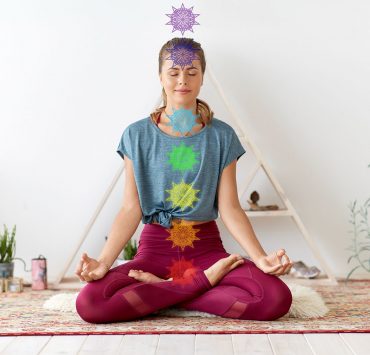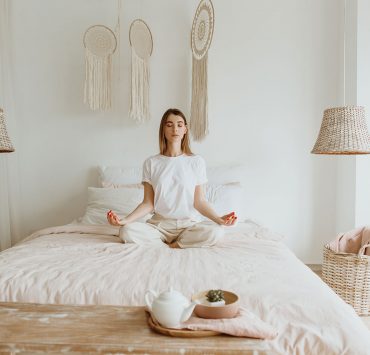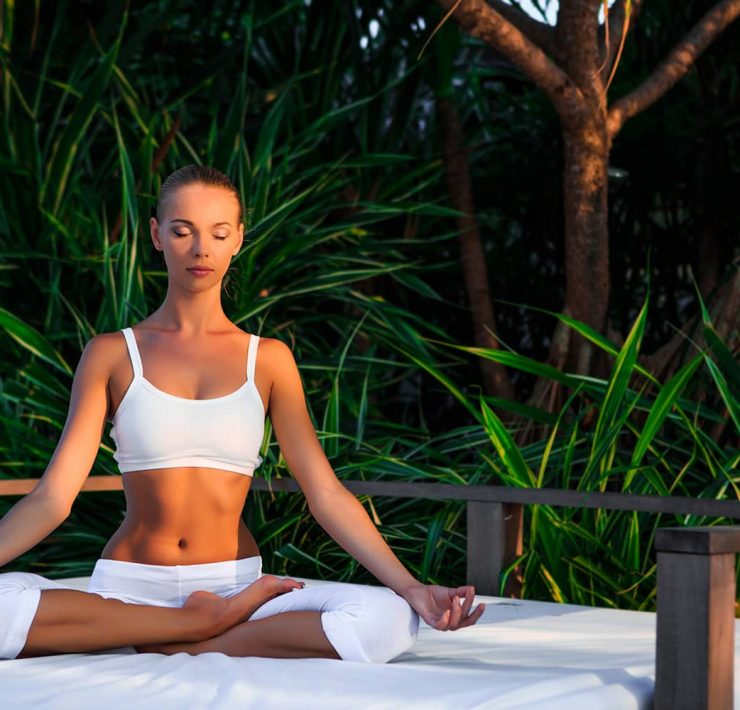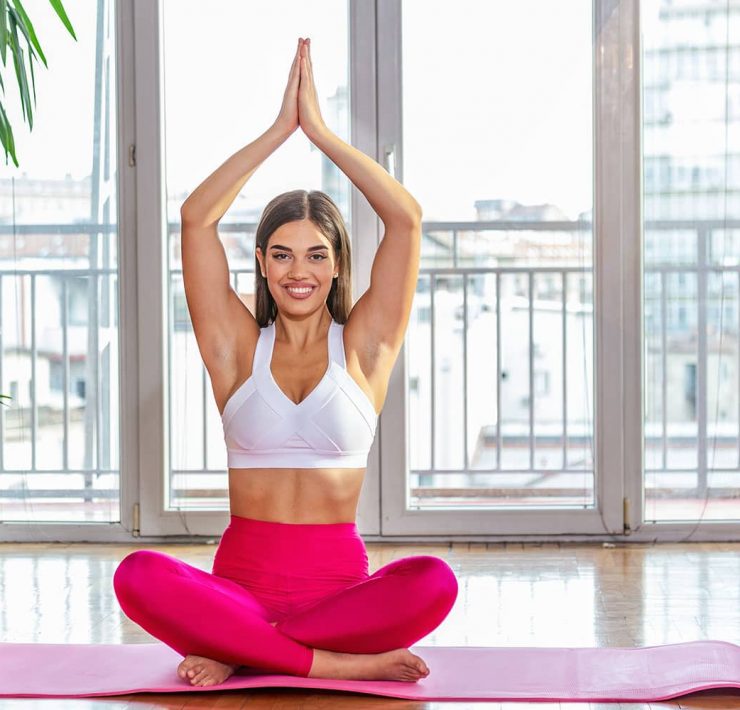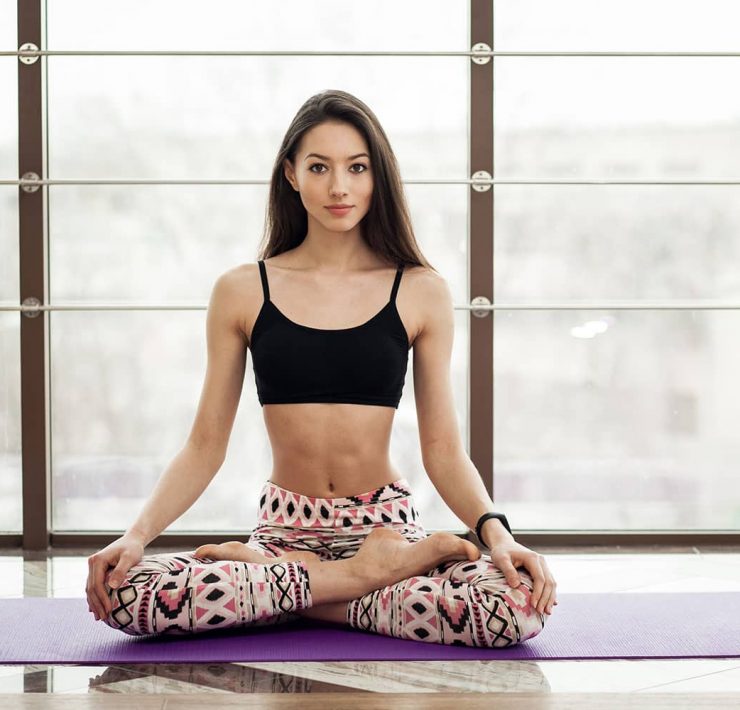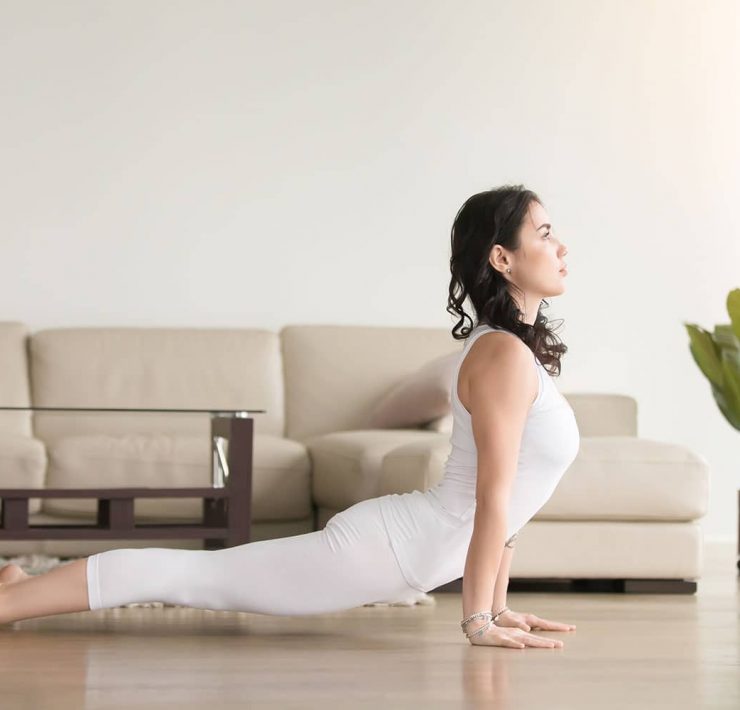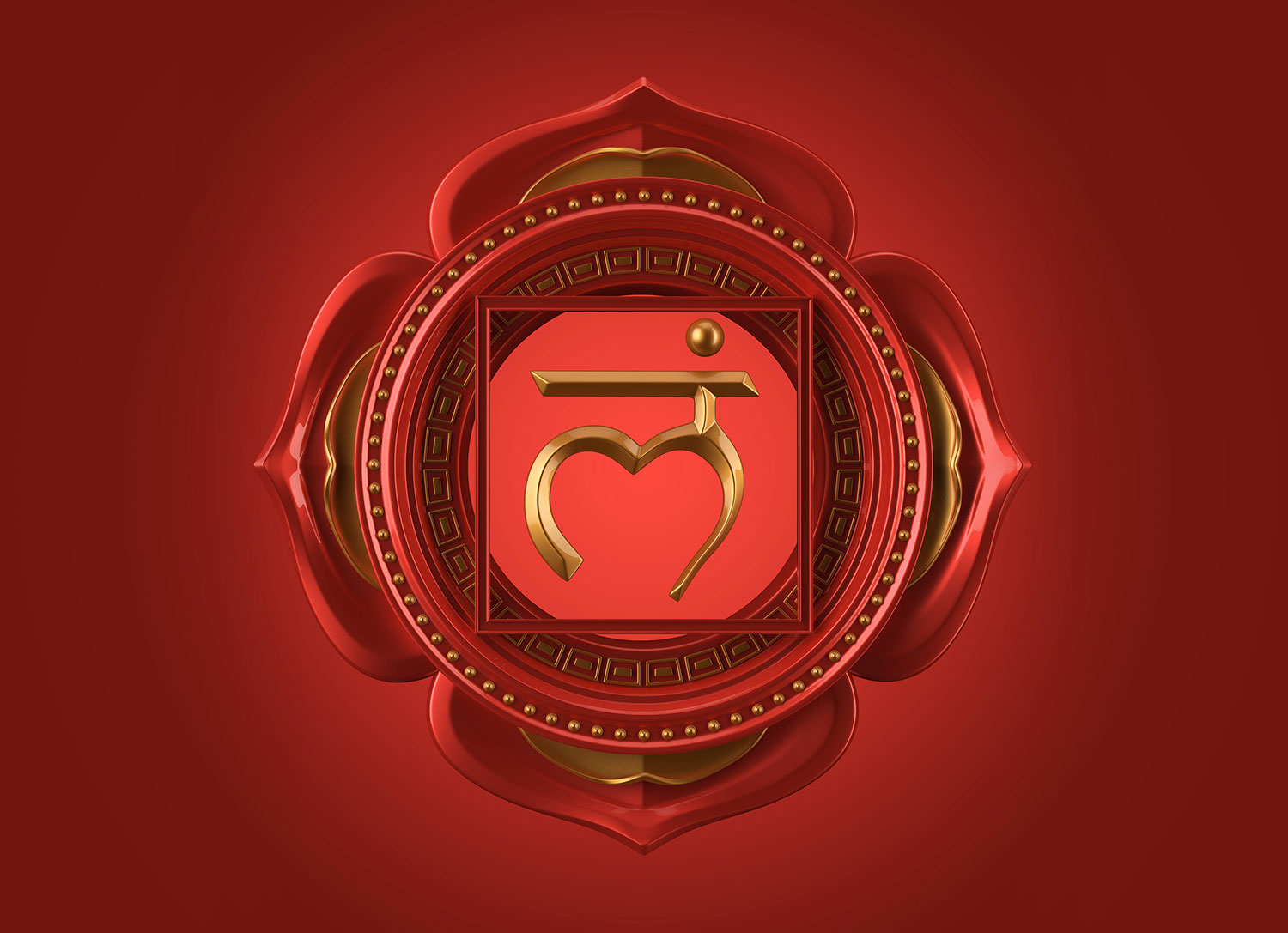
Former nutrition specialist Alexandra Mackenzie knows what it means to…
Within our yoga practice, we seek to recognize and address the needs of the body. But sometimes that can be a difficult thing to identify. A great way to help us pinpoint those needs is through our chakras.
If you’re unfamiliar with chakras, a great place to start is at our root chakra.
The root chakra, located at the base of your spine, is based on the earth element. The corresponding body locations are the perineum, along the first three vertebrae, at the pelvic plexus.
Associated with the feeling of being grounded and safe, a balanced root chakra can provide a feeling of contentment, happiness and inner peace. It cultivates a greater sense of compassion and patience that you can extend towards yourself and as well as to others.
When the energy of your root chakra is flowing well from within you, you will likely feel grounded, calm, and serene. You will also be able to emanate those vibrations around you.
To get more in-depth about our root chakra, let’s dissect the word itself.
What is my Muladhara Chakra?
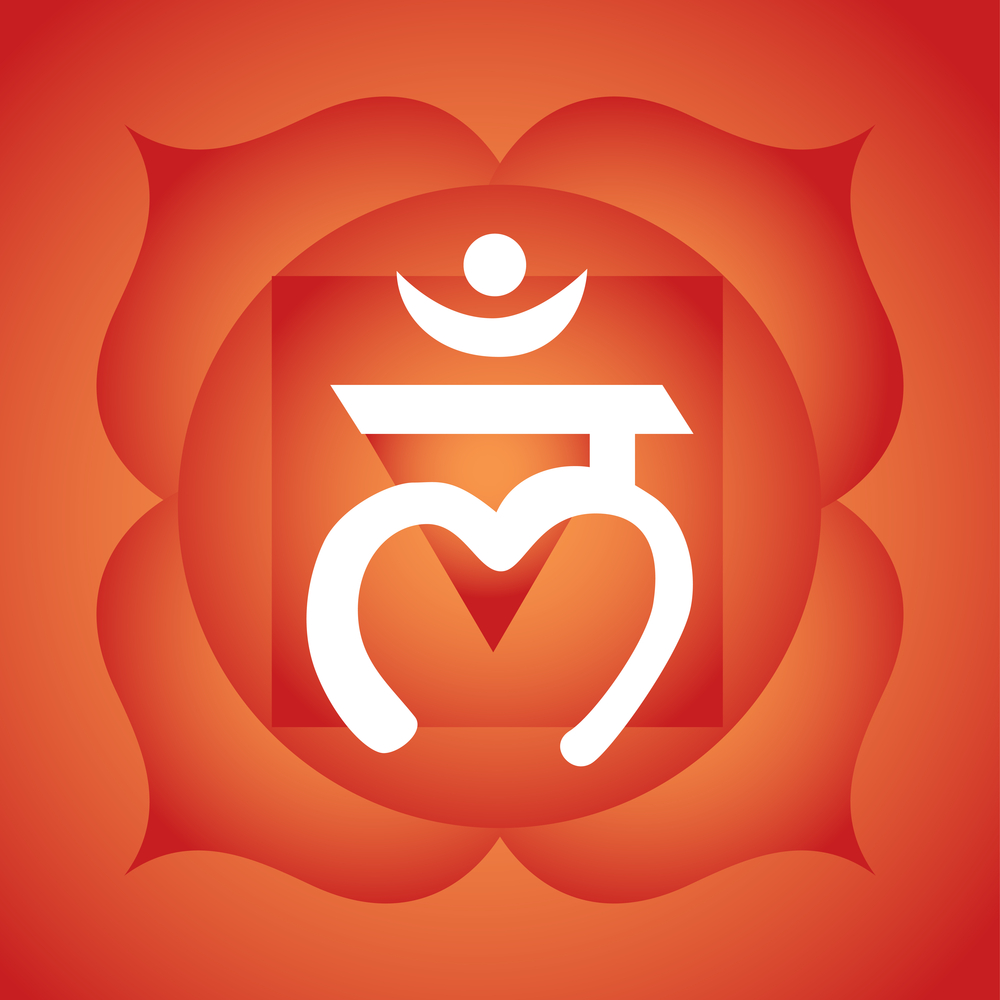
“Mula” means root and “Adhara” means support or base.
Your Muladhara Chakra is the foundation that helps you feel grounded and ready to tackle anything that comes your way. While all seven chakras are important and interconnected, the root chakra is at the base of the entire system and thus affects the foundation of them all.
Our root chakra also includes our survival instinct, our desire for safety and security, and our basic needs such as food, water, and shelter. Our emotional needs and functions like our connectedness to family, our understanding and respect of loyalty, and our beliefs and values are reflected in our Muladhara Chakra as well.
With these needs met, the root chakra is balanced and allows for a stable, grounded, and more secure individual overall.
If your root chakra is out of balance, it can result in a feeling of jumpiness, losing your train of thought, and a lack of attention to your overall self care. Alternatively, some experience feeling lethargic, defeated, and unable to get things done properly.
While everyone’s root chakra is unique to them, it’s important to note the different effects that can take place when your core and foundation are out of balance with one another.
Remember that the root chakra is at the base of your chakra system, and therefore affects the foundation of them all. In this way, it is deeply significant to cultivate a sense of groundedness that will inform the rest of your system to follow suit.
The effects of a balanced Muladhara Chakra are threefold and can improve all aspects of your health. So let’s explore what these benefits are.
The Effects of the Muladhara Chakra
Physically, your Muladhara Chakra relates to your lower back, legs, and feet, and is connected to your inner process of elimination.
Emotionally, your root chakra affects your feelings of security and stability. This can relate to one’s feeling secure in their place in the world as well as feeling secure in their own skin.
Mentally, your Muladhara Chakra influences whether you can take care of yourself, whether you feel that you belong, and can help you appreciate and recognize that you are not less than others. A balanced root chakra allows you to be practical and present.
Now that you are familiar with the benefits of a balanced root chakra, here is a list of poses that can help you cultivate a better relationship with your Muladhara Chakra and allow you to feel more grounded, secure, and at peace within your practice.
#1 Sukhasana – Easy Pose
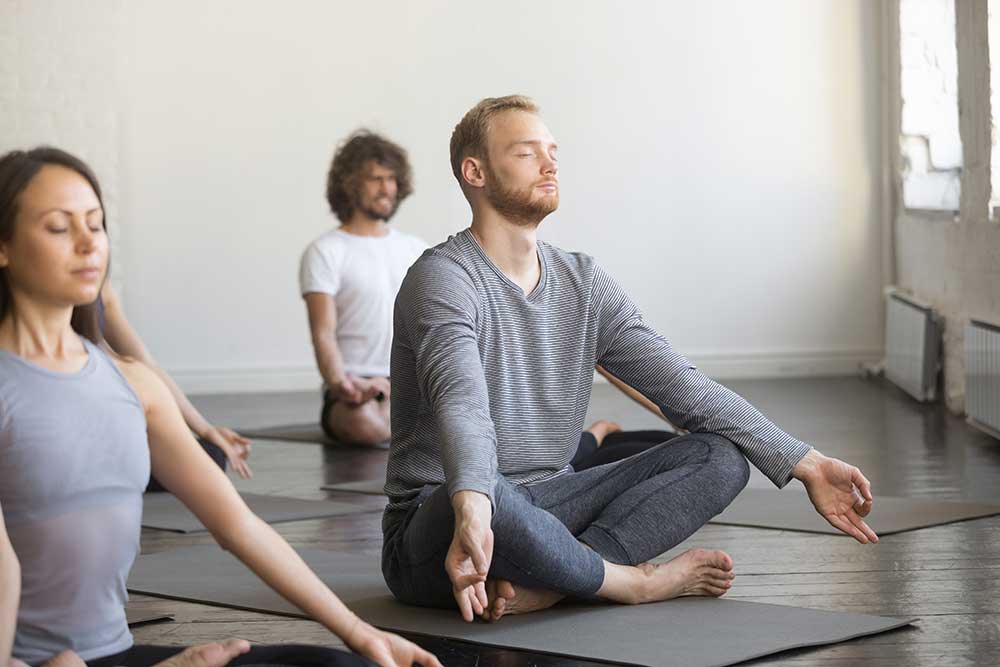
This pose is a peaceful seated posture that allows you to feel the earth beneath you. Connecting directly to the floor and encouraging breath control, Sukhasana teaches you to inhale nourishing energy and exhale all of the things that no longer serve you.
This is a great way to start your practice to help you set an intention and feel grounded throughout your session.
To get into this posture, find yourself in a comfortable seated position with your legs crossed in front of you. Bring your arms down to your sides and rest your palms in your lap on gently on top of your knees.
Extend through the length of your spine and drop your shoulders down, releasing any tension in your neck.
You can close your eyes to better focus on your intention and breathe deeply into your base.
#2 Balasana – Child’s Pose
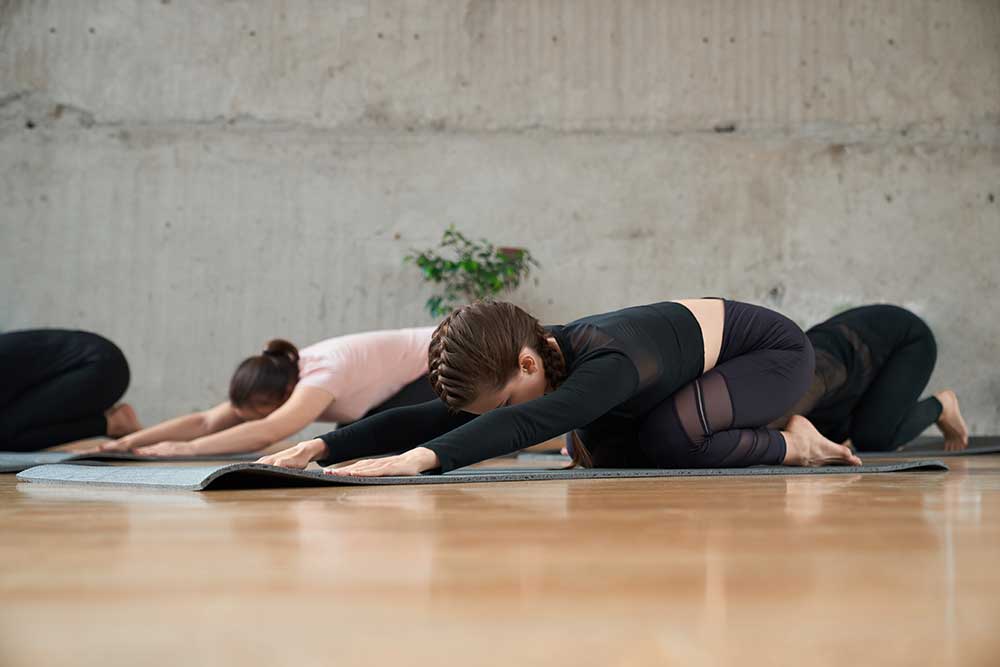
Child’s Pose is a posture that allows your entire body to relax into itself. In this position, you are completely supported by the ground beneath you and can practice this feeling of surrender and support.
This is a grounding posture that can be used at any time during your practice, particularly when you need a break to reconnect with your breath.
Find yourself in a seated position over your shins at the back of the mat. Bring your chest down to the ground and surrender to the weight of your body. You can have your arms at either side of your body or you can extend them out in front of you to stretch out.
Breathe deeply into this pose and feel your back rise and fall with your breath.
#3 Malasana – Garland Pose
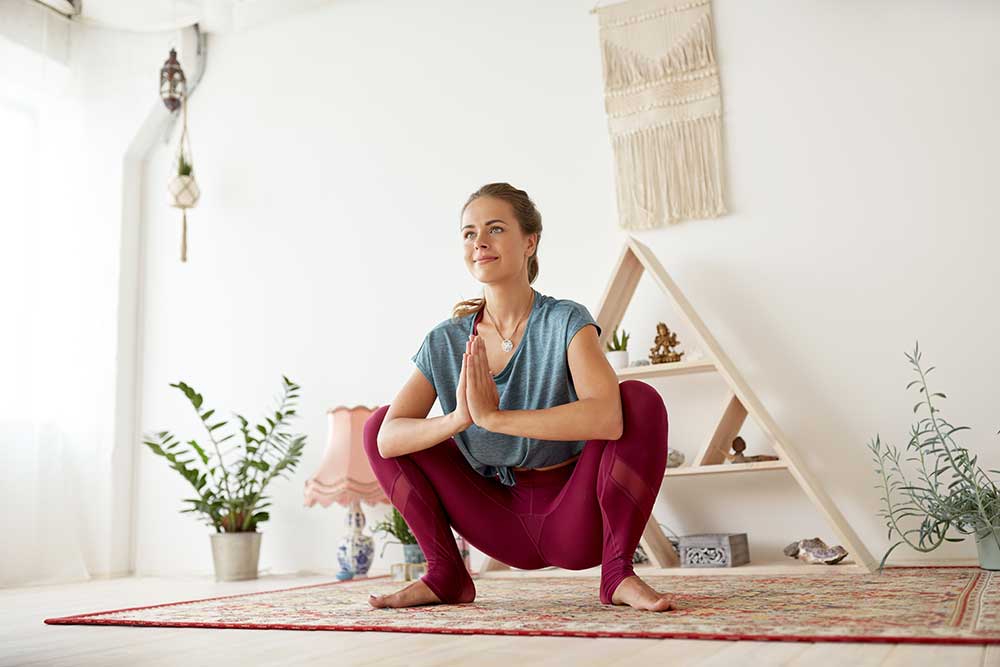
This is a squat position that can physically bring you closer to the earth while calming your mind and spirit. It helps to strengthen your lower back and ankles while opening up your hips from side to side.
To get into your pose, you can start by sitting in Dandasana. Bend both of your legs one at a time until your knees are pointing up to the ceiling. Your calves should be closer to the back of your thighs.
Lean forward and raise your seat, making sure that your feet are pointed out at a 45-degree angle.
If your heels rise up, feel free to place a rolled blanket beneath them for better support.
#4 Uttanasana – Standing Forward Bend
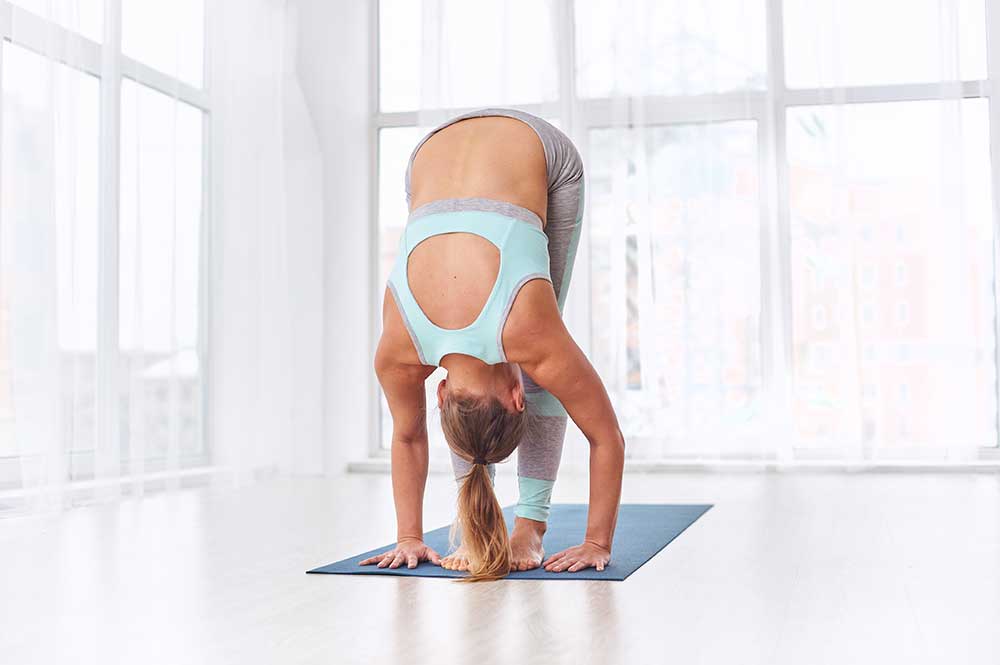
This is a forward fold that allows you to ease the mind and find a sense of center and calmness within your practice. Physically, this posture helps to stretch the hamstrings and relieves tension in the entire back.
Start by standing in Mountain Pose with your feet together. Bend your knees slightly and fold your torso over your legs, hinging from your hips.
Place your hands on your feet or on the ground in front of you. If you’d like, you can also hold on to each elbow to further relax into this pose.
With each inhale, lengthen your spine, and with each exhale, fold a little bit deeper.
#5 Tadasana – Mountain Pose
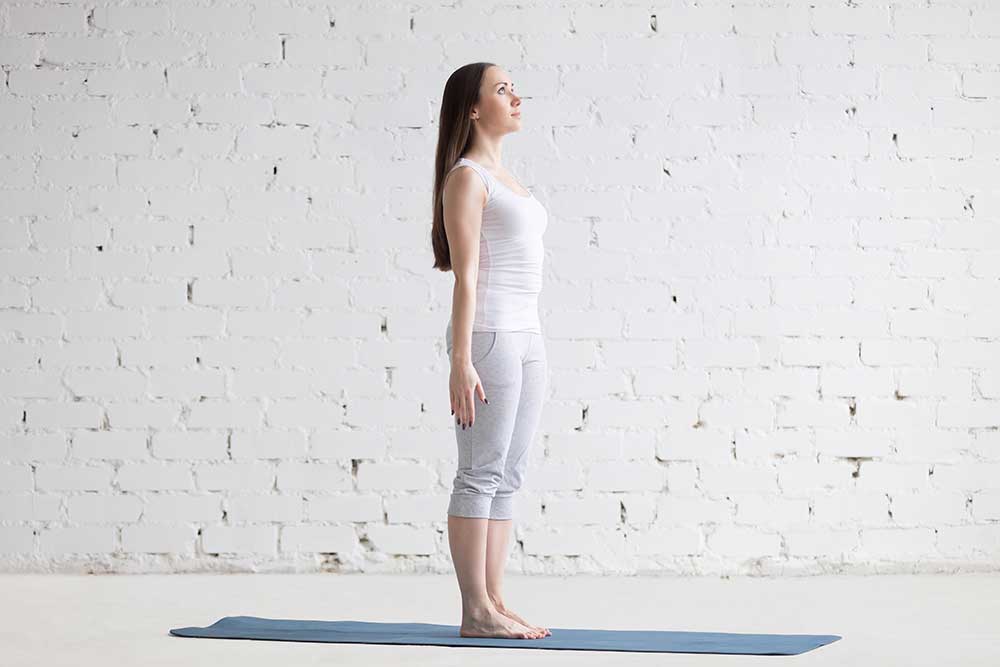
Like a tree, Mountain Pose helps you feel the earth beneath you providing you support and nutrition. This posture encourages your overall balance and relaxation, helping you to feel centered and focused in the present moment.
Stand at the top of your mat with your feet together and ankles slightly apart. Dig your feet into the mat to develop a solid foundation.
Firm the muscles in your calves and thighs and lift up from your hips to elongate your spine. Roll your shoulders open and point your gaze facing out.
Point your palms forward and imagine your feet and hands are roots digging into the earth.
#6 Surya Namaskar – Sun Salutations
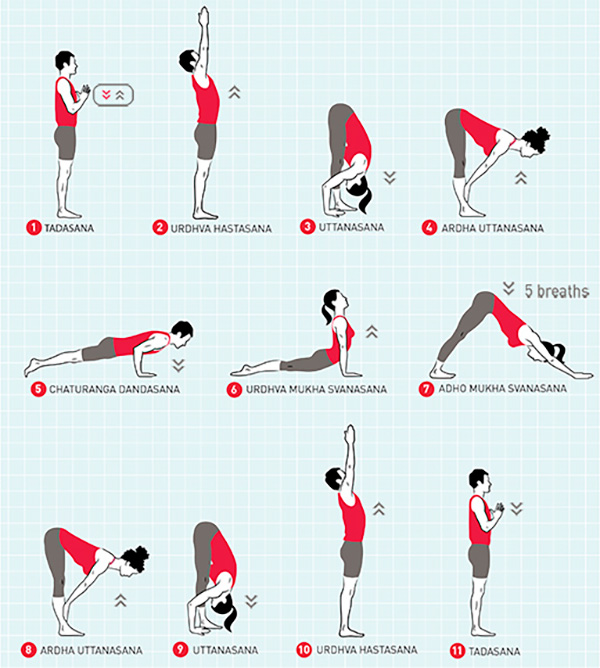
These sequences help to build a slow and steady heat from within the body, cultivating a sense of power and focus that is connected with each inhale and exhale. As you go through the sequence, you will notice the mind surrendering to the current moment as you are drawn into your moving meditation.
Feel free to explore Sun Salutations A, B, and C, and explore the variations within each to enhance your practice.
#7 Anjaneyasana – Crescent Moon Pose
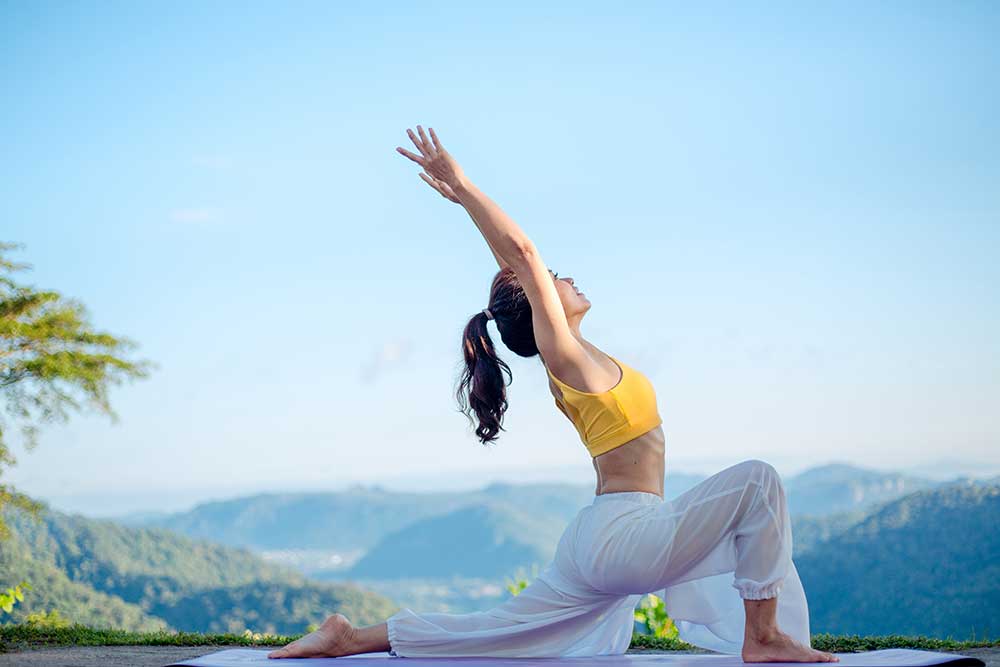
This is a low lunge position that creates an intense stretch for the psoas and quad muscles. These muscles are associated with our fight-or-flight mechanism and can help to transform any of that energy into a calm inner strength.
Start in Downward-Facing Dog and exhale as you step your right foot forward between your hands. Align your right knee over your right heel and lower your left knee down to the ground.
If this is enough of a stretch for you, you can stay here. If you’d like to add a bit of strength to this posture, inhale and lift your torso upright, sweeping your arms out to the sides and up to the sky.
Draw your tailbone down toward the floor and lift your pubic bone toward your navel. Lift your chest so your heart is open and reaching out.
Make sure to repeat on the other side for balance and alignment.
#8 Virabhadrasana II – Warrior II
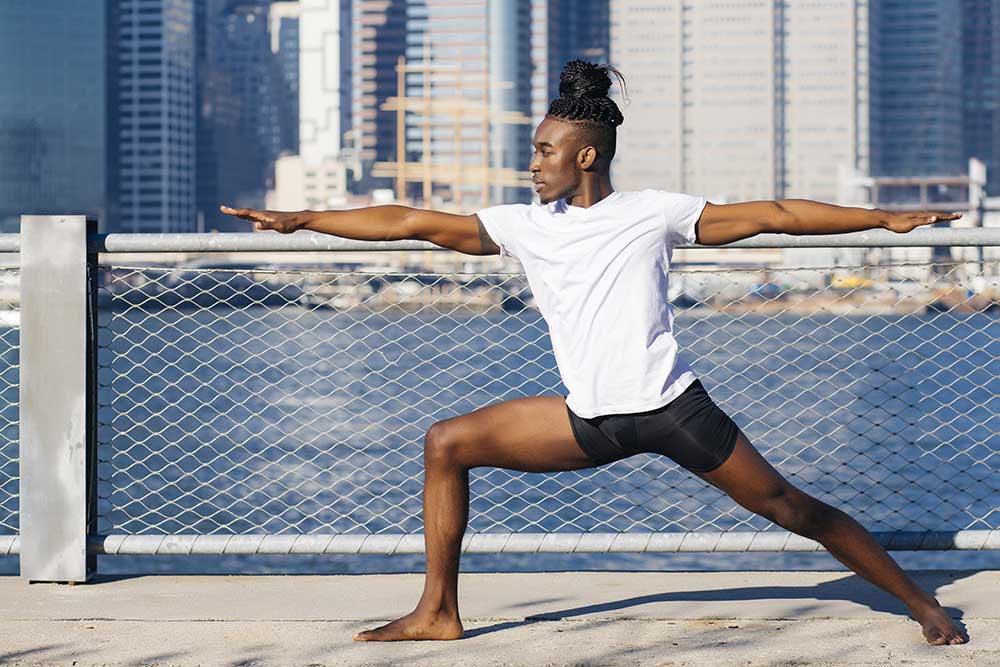
This posture helps you face your fears and doubts while using the body’s natural flow of energy. With your feet firmly planted on the ground, you can dig deep into your inner reserves of strength and determination.
Stand in Mountain Pose and step or jump your feet to be a couple of feet apart. Raise your arms parallel to the floor and reach them out to activate your shoulder blades. Make sure your palms are facing down.
Your front foot should be facing forward while your back foot should be turned out at a 90-degree angle. Firm through your thighs and turn your front thigh outward for a greater stretch.
Exhale and bend your front knee over your front ankle and keep your gaze forward.
Final Tips for Balance and Stability in Muladhara Chakra
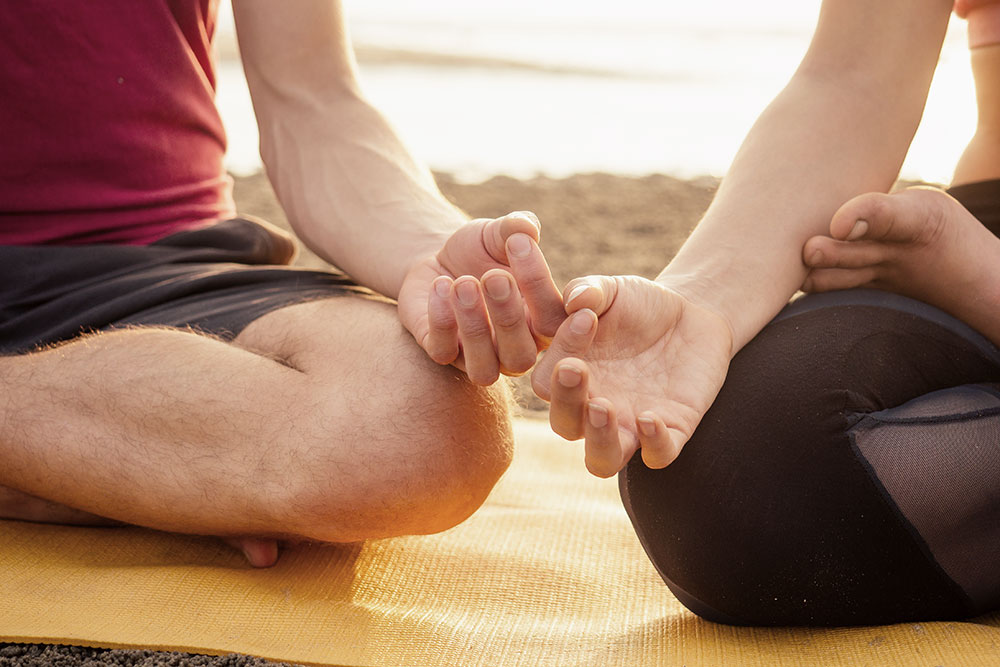
Cultivating a greater sense of stability within your practice can be explored in many forms aside from the poses listed above.
If visualizations have helped you in your practice before, try visualizing the color red or wearing it as this is the color of our root chakra. This visualization may help you tap into your inner sense of groundedness and reveal a more powerful connection.
Another great way of connecting to your Muladhara Chakra is through singing mantras or sound vibrations.
This practice allows you to cultivate vibrational frequencies throughout your body, tapping into your base and core. It also acts as a breathing meditation that can help center and focus your mind.
Often with sound vibrations, you may feel that you are extending beyond yourself, mirroring the ways in which we strive to elongate our roots.
If you’re looking for a more tactile experience, try walking on the earth with bare feet. This way, you can feel the ground underneath you and visualize yourself connecting to the earth as if your legs and feet were roots, similar to our practice in Mountain Pose.
This visualization combined with the coolness of the earth will help you feel safe and nourished in your surroundings. Your bare feet will help inform the variations of the earth beneath and cultivate your sense of balance.
The desire to feel safe, present, and relaxed in the present moment is something that exists beyond the mat as well and can translate to the many different areas of your life. Remember that while these poses are here to guide you, they are not the end-all-be-all for cultivating a balance within your Muladhara Chakra.
As with most practices in yoga, finding balance and stability is a process. Life will continue in its ebbs and flows whether we have control over our surroundings or not.
What really matters is how we utilize the tools within our practice to respond to our circumstances.
Whether it’s through physical yoga poses, visualizations, singing mantras and sound vibrations, or finding a way to feel physically connected to the earth, cultivating your relationship to your Muladhara Chakra will help develop a home base within your own body that you can take with you anywhere.
While we may not have chosen this house or body that we reside in on this earth, we can always choose to make it a home. And with practice and patience, we can make our bodies a home that we enjoy returning to.
Namaste.
What's Your Reaction?
Former nutrition specialist Alexandra Mackenzie knows what it means to support the body and mind through food. She’s passionate about sharing her wealth of knowledge with anyone willing to listen.






